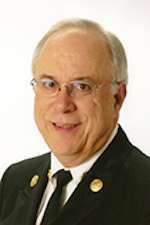By now, you are probably scratching your head asking yourself - so how can I create a safer workplace for our firefighters? The challenges in corporate America to creating and maintaining a safety workforce grow each day. As America's workforce changes, so must the techniques, content, and technologies used to train personnel in safety.
Changes in corporate America are coming from changes in:
- demographics,
- ages,
- education level increasing,
- work/life balance,
- technology, and
- languages.
In a recent article in Professional Safety magazine, the article stated: "Research and recent events indicate that as workers become more educated and organized, and have stronger representation and leadership, demand for improved working conditions and legal and union successes should improve worker health benefits and reduce the disproportionate greater safety risks for immigrant and non-English speaking workers."
This quote illustrates the real world of safety in business and industry. Let's think back just a few decades ago, when mining, steel working and similar industries were struggling with safety in operations, demographic changes, language barriers, etc. These issues were worked-through, with both legislative and operational changes resulting in safer daily performance.
In a sense, we are at a similar crossroads in the fire service. With the identification of the 16 Life Safety Initiatives at the National Fallen Firefighter Line of Duty Death Symposium in 2004 and its follow-up symposium in 2007, the issues that injure and kill our emergency service personnel have been identified. The challenge now comes in defining how to create that safer workforce.
Training becomes a central focal point in creating a safer workforce. The integration of training into this process requires five considerations.
- Obtain and deliver information in the form understood by the audience. Younger employees were taught with different methods and technology than those of middle age and older.
- Instructors must review materials prior to using them. They should be current and understandable to the audience.
- Insure those being taught understood the content. Tests aren't always the answer. Use workshops, exercises, etc. to determine the level of understanding.
- Involve others as needed to refine and improve any training initiative.
- Safety training requires various methods of presentation to be truly effective.
At the end of the day, these key training points are no different for safety than they are for basic job skills. However, many times the two are not integrated.
Occupational safety and health education, as well as training materials, and basic job skill education must continually adapt to the changing characteristics, demographics and needs of the workforce.
Lesson 30
Integrating job skills training with safety training is the key to creating a safer fire service workforce.
Safety 101 - A new series from the technical and administrative perspective, designed to help you reduce emergency responder injuries, illnesses, property loss and death!
References
- Smith, Susan M, Perry, Teresa, and Moyer, Diana, "Creating a Safer Workplace", Professional Safety, December 2006, Page 25.
Related Links
Related Safety 101 Articles:
- Safety 101: An Introduction
- Safety 101: Lesson 1
- Safety 101: Lesson 2
- Safety 101: Lesson 3
- Safety 101: Lesson 4
- Safety 101: Lesson 5
- Safety 101: Lesson 6
- Safety 101: Lesson 7
- Safety 101: Lesson 8
- Safety 101: Lesson 9
- Safety 101: Lesson 10
- Safety 101: Lesson 11
- Safety 101: Lesson 12
- Safety 101: Lesson 12
- Safety 101: Lesson 13
- Safety 101: Lesson 14
- Safety 101: Lesson 15
- Safety 101: Lesson 16
- Safety 101: Lesson 17
- Safety 101: Lesson 18
- Safety 101: Lesson 19
- Safety 101: Lesson 20
- Safety 101: Lesson 21
- Safety 101: Lesson 22
- Safety 101: Lesson 23
- Safety 101: Lesson 24
- Safety 101: Lesson 25
- Safety 101: Lesson 26
- Safety 101: Lesson 27
- Safety 101: Lesson 28
- Safety 101: Lesson 29
DR. WILLIAM F. JENEWAY, CSP, CFO, CFPS, a Firehouse.com Contributing Editor, is Executive Vice President of VFIS and has over 30 years experience in safety and risk management in the insurance industry. He was named "Volunteer Fire Chief of the Year" as Chief of the King of Prussia, PA, Volunteer Fire Company, and is the author the text Emergency Service Risk Management. He has partipated the NVFC Corner podcasts on [email protected]. To read William's complete biography and view his archived articles, click here.

William Jenaway | Firehouse.Com Contributor
Dr. William F. Jenaway, CFO, CFPS has over 40 years of fire service experience, including fire chief in East Bethlehem Township and chief of the King of Prussia, Pa., Volunteer Fire Company. Bill holds the CFO and CTO designations and he holds A.S., B.S., M.A. and Ph.D. degrees. Bill is an adjunct professor in the public safety graduate school at St. Joseph's University in Philadelphia, and in the legal studies graduate school at California University of Pennsylvania. In 2001, he was named "Volunteer Fire Chief of the Year" by Fire Chief magazine.





